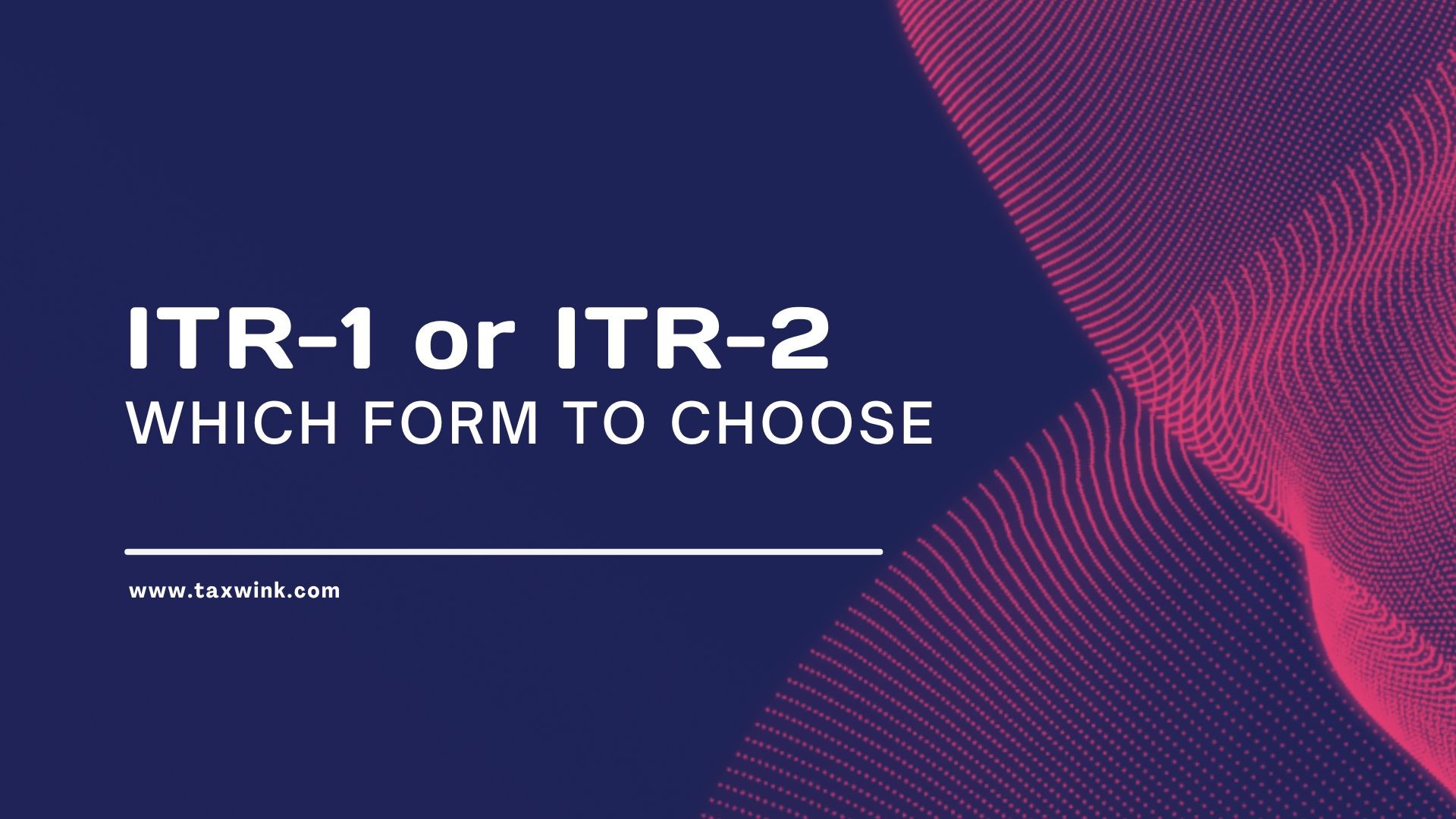Choosing the Correct ITR form- ITR 1 or ITR 2

Income Tax Department has prescribed seven different forms for filing of income tax return for different categories of taxpayers. Income Tax Forms ITR-3, 4 & 6 are applicable to taxpayers engaged in business or profession. Most salaried employees need to file their income tax return either in ITR-1 or ITR-2 but they are often confused that which form will be suitable in their case. This article comes out with the difference between ITR-1 and ITR-2 which will help you decide the most suitable form for you:
ITR-1 Form
ITR-1 which is also known as SAHAJ is the simplest form amongst the 7 prescribed ITR forms to file ITR. ITR-1 is applicable to individuals who are resident in India having total income not more than Rs. 50 Lakhs during the year, who owns not more than one house property, agriculture income not more than Rs. 5,000.
Who is eligible to file ITR-1?
ITR-1 can be filed by the resident individuals who fulfil all the following conditions as below:
- Total annual income of the individual does not exceed Rs. 50 Lakhs in the year.
- His source of income is salary, rental income from not more than one house property, family pension income, agriculture income not more than Rs. 5,000 and interest income (saving account/ FDR/Recurring Deposits)
- He should not be having any income from business or profession.
- He should not be having any income from capital gains.
- He should not be having income from other sources (other than interest income).
If even a single one of conditions out of the above is not met, the individual will not be permitted to submit income tax return using ITR-1 form.
Deadline for ITR-1 Filing
Deadline for filing income tax return in ITR-1 form is 31st July every year. If you miss the deadline, the income tax return can still be filed till 31st December after paying the prescribed late fees.
ITR-2 Form
In case the total income of the individual taxpayer is more than Rs. 50 Lakhs, he is required to file ITR-2. ITR-2 is little more complex as compared to ITR-1 and is meant for salaried persons not having business or profession income but having capital gains income.
Who is eligible to file ITR-2
Following individuals are eligible to file ITR-2:
- Persons who are not eligible to file ITR-1 and
- They do not have income from any business or profession and also no income as a partner in the nature of interest, remuneration or bonus from a partnership firm.
If your total annual income is more than Rs. 50 Lakhs, you are not eligible to use ITR-1 form. You must use ITR-2 form in such case. If an individual is having agriculture income more than Rs. 5,000, he shall be required to file ITR-2. If an individual has a realized net capital gain (loss) by selling equity shares, mutual funds or property, he must use ITR-2 instead of ITR-1.
If an individual is a director in a company or invested in unlisted equity shares, he shall use ITR-2 form rather than ITR-1 form. Further, it is mandatory for each resident individual taxpayer who possesses any foreign bank account, ESOP, or other securities to submit their return using Form ITR-2 and report these assets using Schedule FA.
Deadline for Filing ITR-2
Similar to ITR-1, the deadline for filing ITR-2 is also 31st July every year. Belated return can be filed till 31st December after payment of prescribed late fees.
Consequences of choosing wrong ITR form for filing
If income tax return is filed choosing wrong ITR form, the income tax department shall consider it as “defective” return. Suppose, you have capital gains but still you use ITR-1 form, the department will consider it as a failure to disclose correct and accurate income. The department will notify you about the defect and give an opportunity to rectify the defect within 15 days of receiving notification. If notification is not responded within 15 days, the return filed shall be considered as “invalid”.
Disclaimer: This article is meant for educational purposes only and does not carry any legal or persuasive value. Taxwink shall not be responsible for any loss or damage caused to any person from use of the information contained in this article. Readers are therefore requested to act diligently and under consultation with any professional before applying the information contained in this article. For any user support mail at: support@taxwink.com



